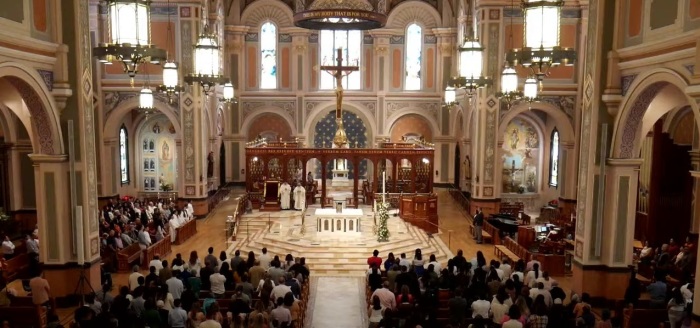Catholic diocese in California files for bankruptcy over child abuse lawsuits

A Roman Catholic diocese based in California has announced that it is filing for bankruptcy due to the expenses related to numerous lawsuits centered on priest abuse.
The Diocese of Sacramento released a statement on Monday confirming that Bishop Jaime Soto had “filed for reorganization of the Diocese of Sacramento’s debts in U.S. Bankruptcy Court.”
The filing comes as the diocese faced over 250 lawsuits related to sex abuse of minors by clergy and lay employees, stemming from incidents that go as far back as the 1950s.
“This wave of new claims followed a 2019 law allowing victim-survivors to file lawsuits regardless of when the abuse occurred. The likely cost of the lawsuits far outstrips the diocese’s funds available for litigation or settlement,” the diocese stated.
“Under Chapter 11 of the Bankruptcy Code, a court will oversee the distribution of available assets to satisfy claims against the diocese. Victim-survivors of clergy sexual abuse will be represented in the court-supervised proceeding. A fund will be established to be distributed to victim-survivors as equitably as possible.”
Soto was quoted in the statement as saying that filing for bankruptcy was the best way to compensate “victim-survivors who have long suffered from the reprehensible sins committed against them.”
“It is the sickening sin of sexual abuse — and the failure of church leadership to address it appropriately — that brought us to this place. I must atone for these sins,” Soto added.
“Join me in praying for the healing of victim-survivors. The pain inflicted on them lasts a lifetime, and so our atonement must be a lifetime commitment.”
The diocese announced its intentions to file for bankruptcy last December, with the bishop sending a letter to diocesan members at the time explaining that the decision came after “much prayer and consideration.”
“Without such a process, it is likely that diocesan funds would be exhausted by the first cases to proceed to trial, leaving nothing for the many other victim-survivors still waiting for compensation,” Soto wrote last year.
In 2019, California passed Assembly Bill 218, which, among other things, expanded the time period in which a person could claim damages for childhood sexual assault.
“In an action for recovery of damages suffered as a result of childhood sexual assault, the time for commencement of the action shall be within 22 years of the date the plaintiff attains the age of majority or within five years of the date the plaintiff discovers or reasonably should have discovered that psychological injury or illness occurring after the age of majority was caused by the sexual assault, whichever period expires later,” read the legislation.
The actions allowed under this standard included “action for liability against any person or entity who owed a duty of care to the plaintiff if a wrongful or negligent act by that person or entity was a legal cause of the childhood sexual assault that resulted in the injury to the plaintiff.”
According to the diocese, of the approximately 250 abuse claims filed, 80% of the alleged incidents took place in the 1980s or earlier, with only six occurring after 2002 when the diocese implemented safeguards and reforms.





























